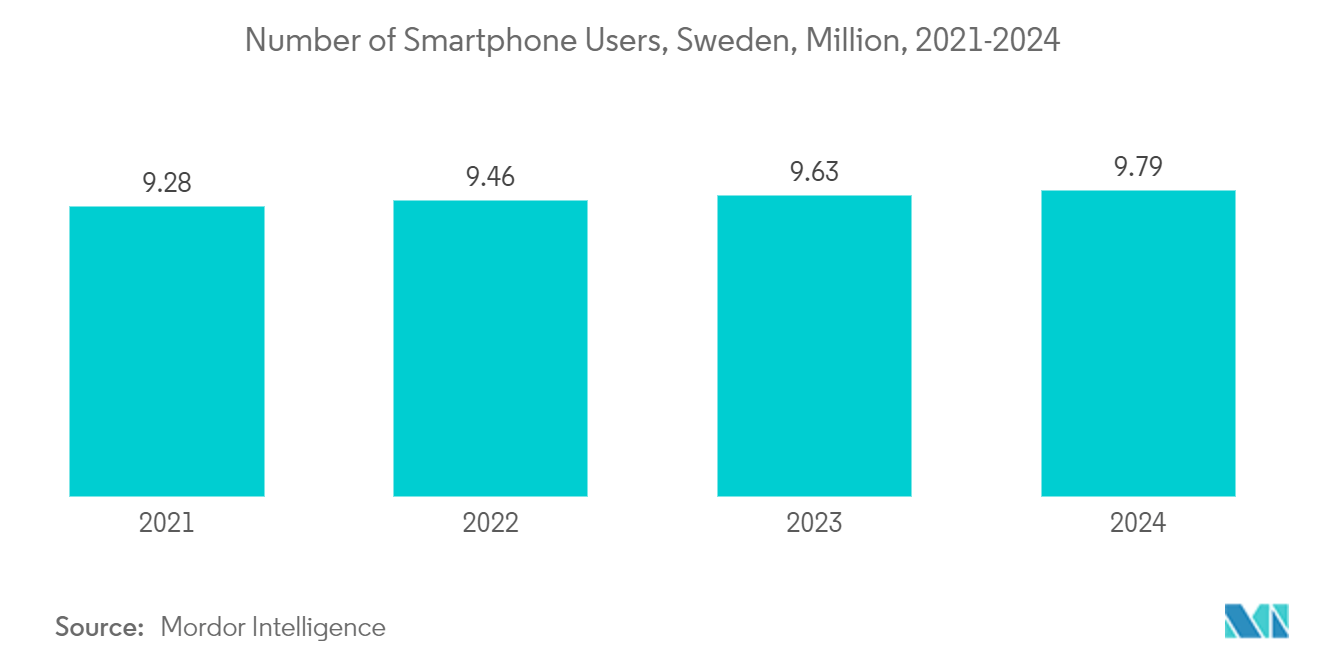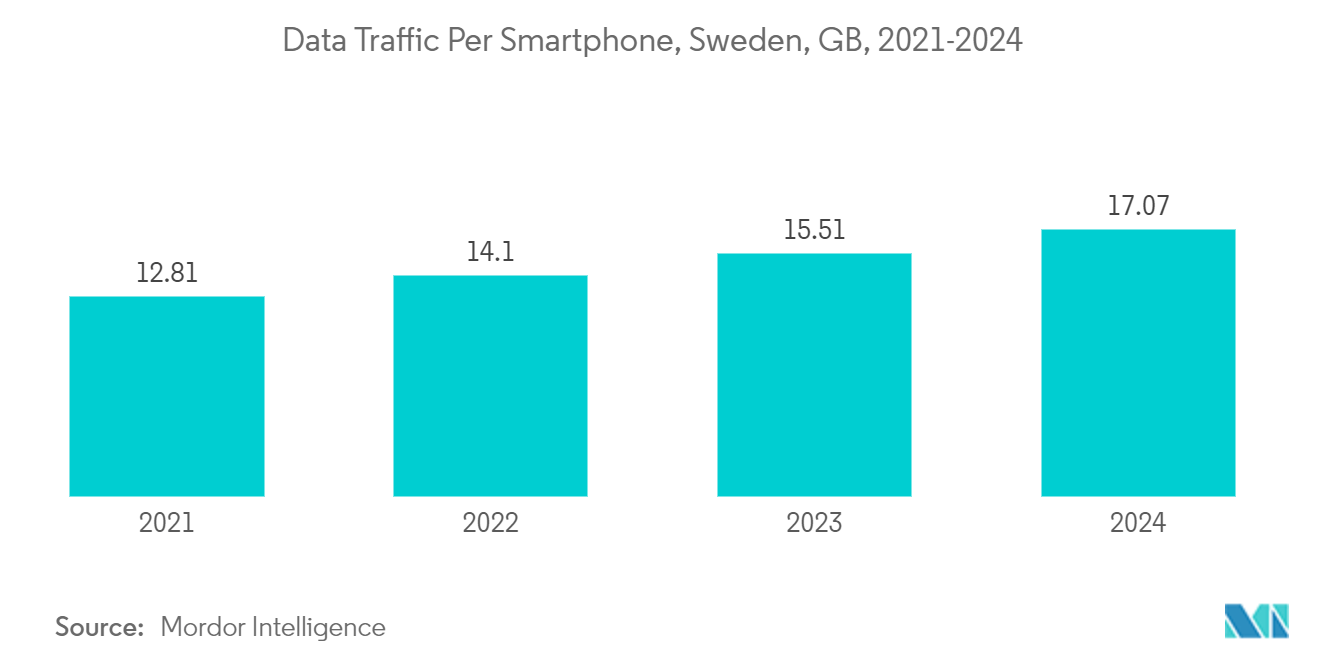Market Trends of Sweden Data Center Cooling Industry
IT and Telecom to Hold Significant Share
- In 2029, the smartphone user base is projected to hit a record high of 9.9 million, marking the ninth consecutive year of growth. This surge in smartphone adoption has paralleled a rise in mobile data traffic and a growing number of mobile internet users. As data traffic escalates, so does the demand for data construction, subsequently driving up the need for cooling solutions.
- Sweden boasts the lowest power prices in the European Union (EU), largely thanks to its local hydropower plants, which ensure a consistent and reliable renewable energy source. With an impressively low carbon footprint of just 0.04 g CO2 per kWh, Sweden is becoming a prime destination for telecom companies. These firms are shifting their data operations from costly fossil-fuel-dependent regions to Sweden's affordable clean energy landscape, driving market demand.
- As 4G adoption surges and the 5G wave approaches, telecom vendors are increasingly channeling investments into Swedish data centers. In a recent move, Net4Mobility, a Swedish network provider formed by the collaboration of local carriers Tele2 and Telenor, unveiled its ambition to link 90% of Sweden's populace to its 5G network by the close of 2023. These advancements are poised to drive heightened investments in data processing facilities.
- In 2023, leading technology companies established active sites in Nordic countries, with Sweden taking the lead. Factors such as a favorable regulatory environment, robust infrastructure (notably fiber optic connections), affordable energy, abundant renewable resources, and a naturally cooler climate (reducing cooling system needs) have all contributed to this trend.

Liquid Cooling to Hold Significant Growth
- In facilities with exceptionally high-density racks, typically exceeding 30 kW, air cooling proves inadequate for maintaining the reliability of IT systems, regardless of how new or optimized they are. As rack power requirements in many facilities are near 20 kW, and with companies targeting racks demanding 50 kW or more, liquid cooling transitions from an option to an absolute necessity. Notably, facilities like STHLM 4 of Conapto (Designrepublic.se) are currently under construction, emphasizing the trend toward high rack density.
- As internet usage surges and e-commerce expands, the demand for hyperscale data centers is skyrocketing. These data centers, predominantly run by tech giants, are pivotal for cloud services and the burgeoning fintech startups and have a significant environmental footprint, notably in water consumption. A case in point: a data center in Sweden has managed to slash its energy bills by a million dollars annually by harnessing seawater for server cooling. Similarly, Interxion, a colocation firm based in the Netherlands with data center operations in 11 countries, pumps water from the Baltic Sea to cool its IT equipment in Stockholm.
- Free cooling is a hallmark of the Swedish data center region. Utilizing direct water evaporation for humidification, this approach consumes minimal energy. As a result, this straightforward and economical method achieves a 30% cut in energy expenses and slashes water usage by 90% compared to conventional water-based cooling systems. To meet the humidification water needs of the data center, a rainwater harvesting system was implemented, significantly reducing the reliance on fresh water.
- Over 45% of businesses in Sweden report that cloud computing technologies have gained significance in their operations. Additionally, the rising number of internet users and the widespread adoption of wireless devices drive the demand for online cloud platforms. As cloud storage adoption surges, so does the anticipated demand for liquid cooling systems in data centers. Furthermore, tech giants like Google and Microsoft are expanding their domestic storage capacities and optimizing cloud workflows, intensifying the demand for liquid cooling solutions.


